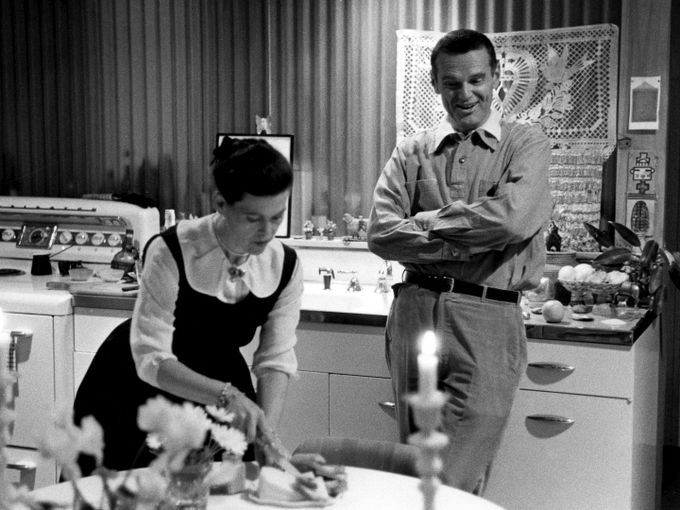Vitra
How and where it all began

In 1937 Willi Fehlbaum took over the shopfitting company Graeter in Basel, where he did his apprenticeship as a young man. In 1950 his wife Erika inaugurated a manufacturing facility situated in the neighbouring town of Weil am Rhein, just across the Swiss-German border. The company name was extended to include the word Vitra – as a play on the German word ‘Vitrine’ (meaning display case in English) – and the first Vitra logo was born.
In 1956 the Basel-based company moved into a newly constructed office and factory building in the suburb of Birsfelden. Designs by Charles und Ray Eames went into licensed production here the following year – and also in the German factory a short time later. To expand the production site in Weil am Rhein, Erika Fehlbaum acquired additional land from relatives and neighbouring property owners, developing the location into Vitra’s main production site. From the early 1980s onwards it evolved into the place now known as the Vitra Campus, which welcomes hundreds of thousands of visitors every year.
In 1956 the Basel-based company moved into a newly constructed office and factory building in the suburb of Birsfelden. Designs by Charles und Ray Eames went into licensed production here the following year – and also in the German factory a short time later. To expand the production site in Weil am Rhein, Erika Fehlbaum acquired additional land from relatives and neighbouring property owners, developing the location into Vitra’s main production site. From the early 1980s onwards it evolved into the place now known as the Vitra Campus, which welcomes hundreds of thousands of visitors every year.


Renowned architects have been responsible for numerous ground-breaking buildings at the company’s two main sites: the Vitra Center in Birsfelden, where the corporate headquarters and product development are located; and the manufacturing and logistics facilities built after 1981 on the Vitra Campus in Weil am Rhein, including the Vitra Design Museum, Fire Station, Conference Pavilion, Oudolf Garten and VitraHaus, as well as restored historic structures and art installations. As milestones of contemporary architecture, these constructions form an ensemble of unique density, while also serving as an expression of Vitra’s cultural interest in design and architecture. The VitraHaus is Vitra’s flagship store and showcases the Eamesian mottos ‘Select and arrange’ and ‘Be a good host’ with the presentation of changing home furniture arrangements.

In 1984, in the early days of the Vitra Campus, Ray Eames visited Weil am Rhein one more time for the inauguration of the sculpture Balancing Tools by Claes Oldenburg and Coosje van Bruggen. The Vitra Design Museum opened in 1989 – one year after Ray’s death – and has since hosted several exhibitions on the work of Charles and Ray Eames. Today, the continuing close bond between Vitra and the Eameses is also highlighted by the street names ‘Charles-Eames-Strasse’ and ‘Ray-Eames-Strasse’ on the Vitra Campus.


Publication Date: 19.4.2023
Images: Adrian Gaut; Rolf Frei; Thomas Dix; Vitra;


